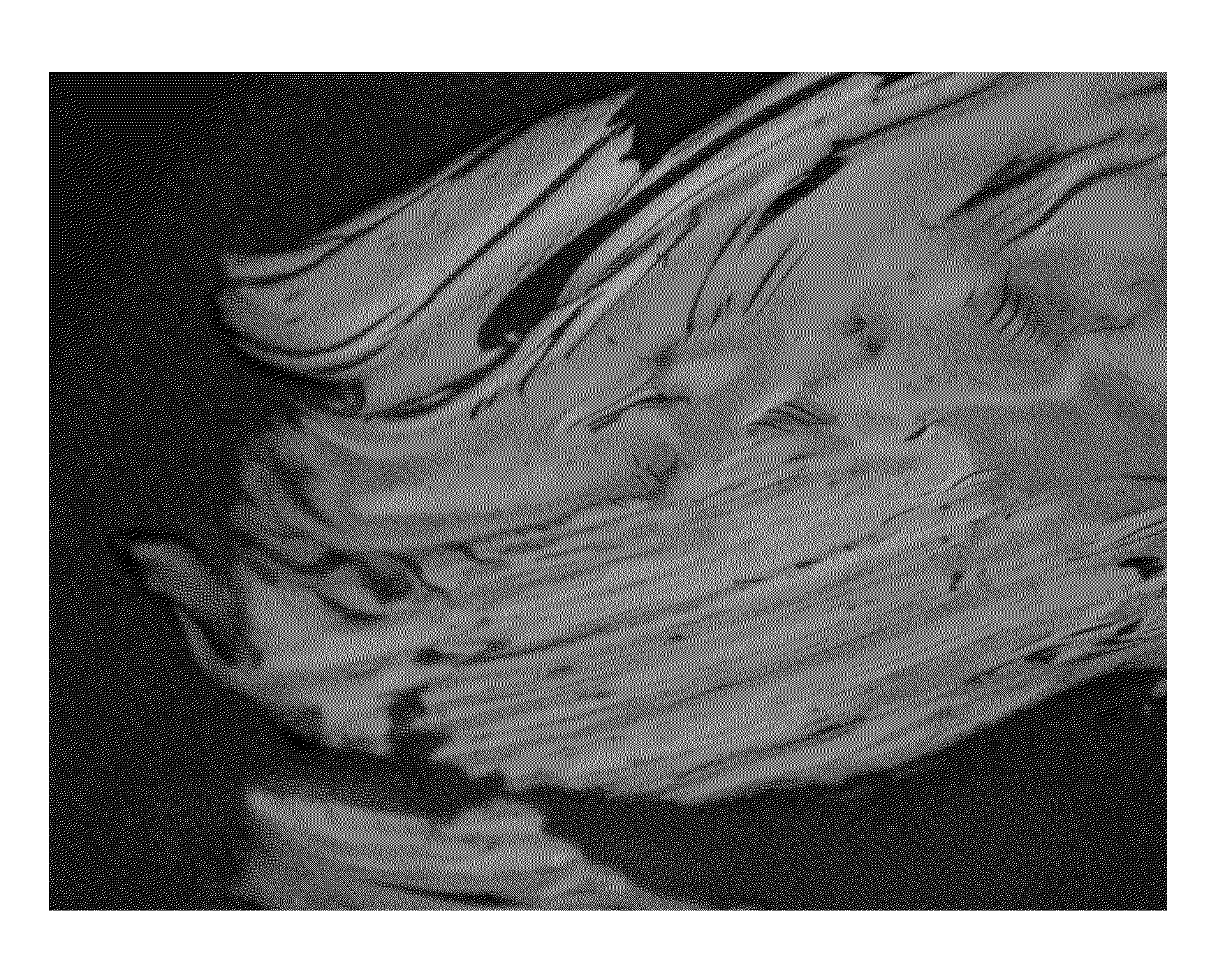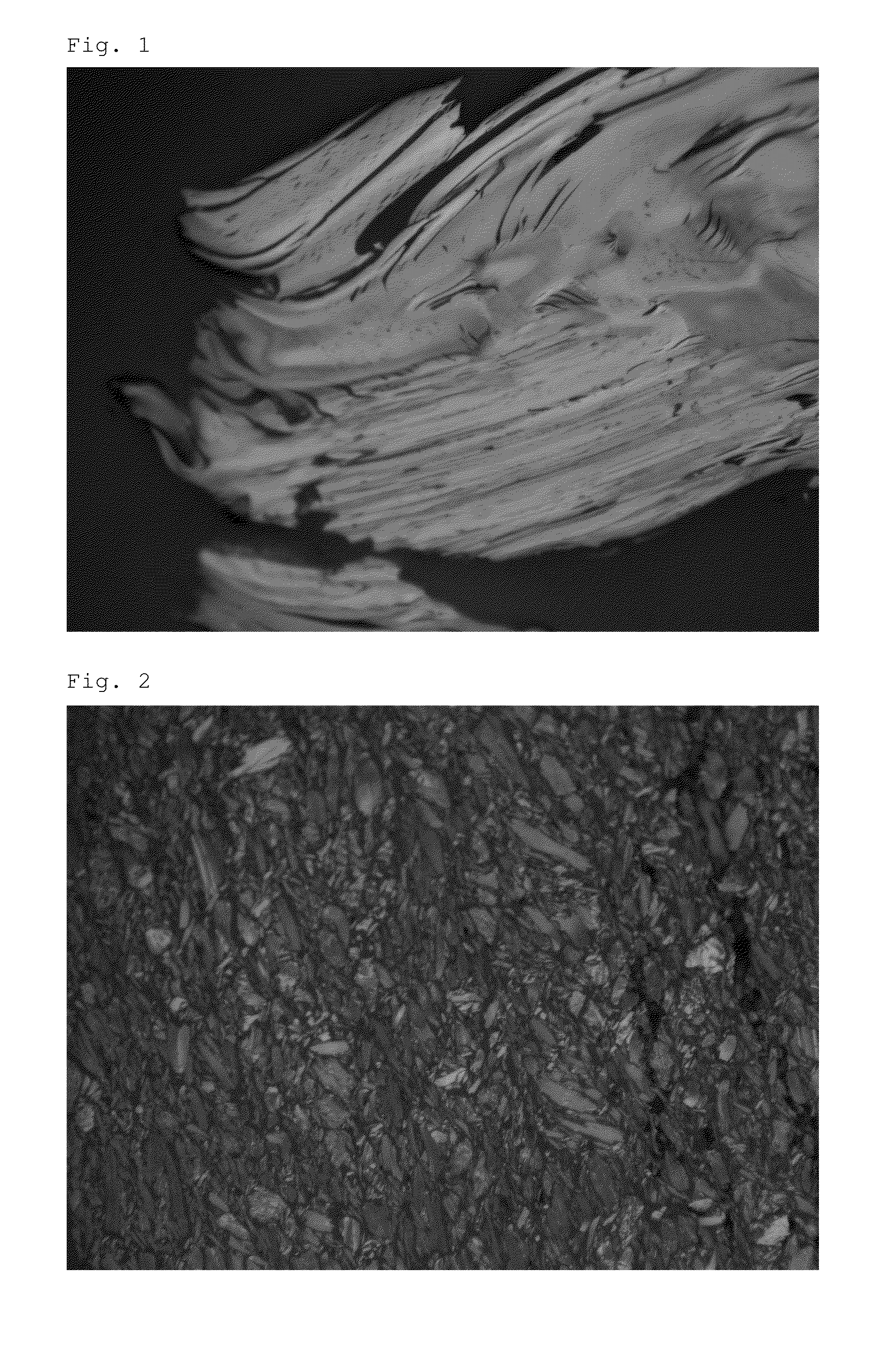Carbon material, carbon material for battery electrode, and battery
a battery electrode and carbon material technology, applied in the field of carbon material, carbon material for battery electrode, and battery, can solve the problems of high material price, difficult material to meet the demand, and low volume energy density, and achieve high energy density, high coulomb efficiency, and high capacity
- Summary
- Abstract
- Description
- Claims
- Application Information
AI Technical Summary
Benefits of technology
Problems solved by technology
Method used
Image
Examples
example 1
[0167]A crude oil produced in Liaoning, China (28° API, wax content of 17% and sulfur content of 0.66%) was distilled under ordinary pressure. Using a Y-type zeolite catalyst in a sufficient amount against the heavy distillate, catalytic cracking in a fluidized bed was performed at 510° C. under ordinary pressure. A solid content such as a catalyst was centrifuged until the obtained oil became clear to thereby obtain decant oil 1. The oil was subjected to a small-sized delayed coking process. After keeping the drum inlet temperature at 505° C. and the drum internal pressure to 600 kPa (6 kgf / cm2) for ten hours, the drum was water-cooled to obtain black chunks. After pulverizing the obtained black chunks into pieces up to five centimeters in size with a hammer, they were heated in a rotary kiln (external-heating type with an electrical heater; aluminum oxide SSA-S Φ120 mm inner tube) in which the outer wall temperature in the center of the inner tube is set at 1,450° C. by adjusting ...
example 2
[0174]Coal tar derived from bituminous coal was distilled at 320° C. under ordinary pressure and distillate of the distillation temperature or lower was removed. From the obtained tar having a softening point of 30° C., the insoluble matter was removed by filtration at 100° C. to obtain viscous liquid 1. The liquid was subjected to a small-sized delayed coking process. After keeping the drum inlet temperature at 510° C. and the drum internal pressure to 500 kPa (5 kgf / cm2) for ten hours, the drum was water-cooled to obtain black chunks. After pulverizing the obtained black chunks into pieces up to five centimeters in size with a hammer, they were heated in a rotary kiln (external-heating type with an electrical heater; aluminum oxide SSA-S Φ120 mm inner tube) in which the outer wall temperature in the center of the inner tube is set at 1,450° C. by adjusting the feeding rate and tilting angle of the black chunks so as to set the retention time to 15 minutes.
[0175]The obtained red-ho...
example 3
[0183]An Iranian crude oil (30° API, wax content of 2% and sulfur content of 0.7%) was distilled under ordinary pressure. Using a Y-type zeolite catalyst in a sufficient amount against the heavy distillate, catalytic cracking in a fluidizing bed was performed at 500° C. under ordinary pressure. A solid content such as a catalyst was centrifuged until the obtained oil became clear to thereby obtain decant oil 2. The oil was subjected to a small-sized delayed coking process. After keeping the drum inlet temperature at 550° C. and the drum internal pressure to 600 kPa (6 kgf / cm2) for ten hours, the drum was water-cooled to obtain black chunks. After pulverizing the obtained black chunks into pieces up to five centimeters in size with a hammer, they were heated in a rotary kiln (external-heating type with an electrical heater; aluminum oxide SSA-S Φ120 mm inner tube) in which the outer wall temperature in the center of the inner tube is set at 1,450° C. by adjusting the feeding rate and...
PUM
| Property | Measurement | Unit |
|---|---|---|
| interplanar spacing d002 | aaaaa | aaaaa |
| volume-based average particle diameter | aaaaa | aaaaa |
| volume-based average particle diameter | aaaaa | aaaaa |
Abstract
Description
Claims
Application Information
 Login to View More
Login to View More - R&D
- Intellectual Property
- Life Sciences
- Materials
- Tech Scout
- Unparalleled Data Quality
- Higher Quality Content
- 60% Fewer Hallucinations
Browse by: Latest US Patents, China's latest patents, Technical Efficacy Thesaurus, Application Domain, Technology Topic, Popular Technical Reports.
© 2025 PatSnap. All rights reserved.Legal|Privacy policy|Modern Slavery Act Transparency Statement|Sitemap|About US| Contact US: help@patsnap.com


